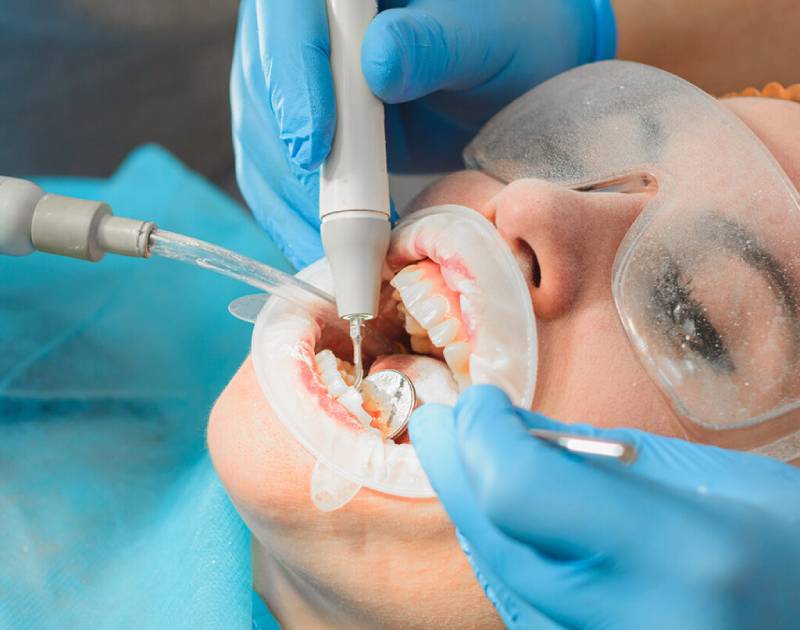- (718) 268 8228
- (718) 268 1281
- madisondentalny@gmail.com
- 112-03 Queens Boulevard, Suite 211, Forest Hills, NY 11375
Tooth Extraction in Forest Hills, Queens NY
EXPLORING TOOTH EXTRACTION: REASONS AND WHAT TO EXPECT
UNDERSTANDING THE NEED FOR TOOTH EXTRACTION
While permanent teeth are designed to last a lifetime, various situations may arise, making tooth extraction a viable option. Some common reasons include:
- Severe Damage: Teeth that have sustained extensive damage from trauma or decay may be beyond repair. In such cases, extraction is often the best course of action to prevent further complications.
- Orthodontic Preparation: In cases of a crowded mouth where there isn’t enough space for proper alignment, tooth extraction can create the necessary room, making orthodontic treatment more effective.
- Infection Risk: When tooth decay or damage extends deep into the pulp (the tooth’s inner portion containing nerves and blood vessels), it can lead to infection. In some instances, even a minimal risk of infection may warrant tooth extraction, particularly if your immune system is compromised due to medical conditions or treatments like chemotherapy or organ transplants.
- Periodontal (Gum) Disease: Severe periodontal disease can result in the loosening of teeth due to the infection of the tissues and bones supporting them.


THE TOOTH EXTRACTION PROCESS
Tooth extractions are performed by dentists and oral surgeons who specialize in surgical procedures. Here’s what you can expect during the tooth extraction process:
- Local Anesthesia: Before the extraction begins, your dentist will administer a local anesthetic to numb the area where the tooth will be removed. This ensures a pain-free experience during the procedure.
- Tooth Exposure (If Necessary): In cases of impacted teeth, where the tooth is partially or fully covered by gum and bone tissue, your dentist will carefully expose the tooth by making incisions and removing the obstructing tissue.
- Extraction: Once the tooth is accessible, your dentist will gently grasp it with forceps and, if necessary, use controlled movements to loosen it from the jaw bone and the ligaments that secure it in place. In certain instances, a stubborn tooth may need to be removed in sections.
- Blood Clot Formation: After the tooth extraction, a blood clot naturally forms in the socket. Your dentist will place a gauze pad over the extraction site, and you’ll be instructed to bite down on it to promote clot formation and stop bleeding.
- Potential Stitches: In some cases, your dentist may use self-dissolving stitches to close the gum edges over the extraction site. These stitches gradually dissolve as the site heals.
POST-EXTRACTION CARE GUIDELINES
Effective post-extraction care is essential for a smooth and complication-free recovery. Here are some guidelines to follow:
- Pain Management: Take painkillers as prescribed by your dentist to manage any discomfort.
- Gauze Pad: Continue biting firmly but gently on the gauze pad to minimize bleeding and promote clot formation. Change the gauze as needed.
- Swelling Control: Apply an ice bag to the affected area immediately after the procedure to reduce swelling. Apply ice in 10-minute intervals.
- Rest and Relaxation: Rest for at least 24 hours after the extraction. Limit strenuous activity for the next day or two.
- Avoid Aggressive Actions: Refrain from rinsing or spitting forcefully for 24 hours after the extraction to prevent dislodging the clot.
- Oral Rinse: After the initial 24 hours, rinse your mouth with a warm saltwater solution (1/2 teaspoon salt in 8 ounces of warm water).
- Lifestyle Adjustments: Avoid using a straw, smoking, or consuming foods and drinks that can inhibit healing.
- Soft Diet: Consume soft foods like soup, pudding, yogurt, or applesauce on the day after extraction. Gradually reintroduce solid foods as the site heals.
- Head Elevation: When lying down, prop your head up with pillows to reduce the risk of prolonged bleeding.
- Oral Hygiene: Continue to brush and floss your teeth, but avoid the extraction site to prevent infection.


WHEN TO CONTACT YOUR DENTIST
While some discomfort and minimal bleeding are normal following a tooth extraction, certain signs warrant contacting your dentist promptly. These include:
- Severe or persistent bleeding or pain more than four hours after the procedure.
- Signs of infection, such as fever, chills, or discharge from the affected area.
- Nausea, vomiting, or other unusual symptoms.
- Redness, swelling, or excessive discharge from the extraction site.
- Respiratory issues, chest pain, or severe nausea or vomiting.
- Your Partner in Dental Health
At Madison Dental Art, we are your partners in dental health, dedicated to providing safe and effective dental care. If you require a tooth extraction or have any questions or concerns about the procedure, please don’t hesitate to reach out. We are here to support your journey towards optimal oral health and well-being.
How to find a tooth extraction service in Forest Hills?
Madison Dental Art: Searching for professional tooth extraction in Forest Hills, Queens?
You’ve come to the right place! Located at 112-03 Queens Boulevard, Suite 211, Forest Hills, NY 11375, Madison Dental Art is your trusted provider for safe and comfortable tooth extractions, ensuring your oral health is well taken care of.
Trustindex verifies that the original source of the review is Google. The Service is excellent. No waiting to be seen. Appointments are on target. The Staff give them all anA++. Try Madison Dental you just might like them. The best!!!Posted onTrustindex verifies that the original source of the review is Google. Not only is DDS Chao wonderful and patience but so is the entire staff. It's always a pleasant experience.Posted onTrustindex verifies that the original source of the review is Google. I love my dentist. They are caring, patient however I was disappointed in the no communication given regarding my procedure and extras. Otherwise I'm sure they deserve another chance since I've been going for so many yearsPosted onTrustindex verifies that the original source of the review is Google. Waiting area is modern and immaculate. Staff is very friendly. Most importantly Dr Chao is wonderful. He is gentle, kind, positive and very competent. He put me at ease and efficiently and effectively did the necessary exam and cleaning. I was very pleased with my first visitPosted onTrustindex verifies that the original source of the review is Google. Emergency Swollen gums visit. The infection was relieved promptly. Excellent service & friendly staff.Posted onTrustindex verifies that the original source of the review is Google. Best dentist, clean and gentle. I wouldn't trust anyone else.Posted onTrustindex verifies that the original source of the review is Google. Dr. Zheng does great quality work. Good attention to patient needs. The facilities are clean and orderly.Posted onTrustindex verifies that the original source of the review is Google. I can’t say enough about Madison Dental Art. Dr.Chao is the best dentist I have gone to by far. He’s very patient and understanding when it comes to my fear of the dentist. He’s very gentle and never rushes a procedure. He tells me what he’s doing before doing anything. The front staff is very welcoming and friendly they make you feel like they know you forever. They also send you reminders about your up coming appointments. I wouldn’t go any place else!